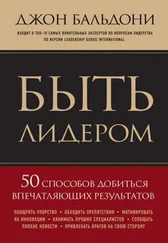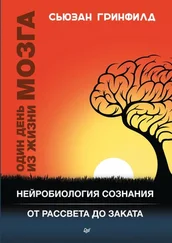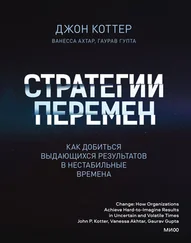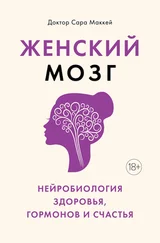Aglioti S., Cesari P., Romani M., & Urgesi C. (2008). Action anticipation and motor resonance in elite basketball players // Nature Neuroscience 11(9). 1109–1116. http://dx.doi.org/10.1038/nn.2182.
Laby D., Davidson J., Rosenbaum L., Strasser C., Mellman M., Rosenbaum A. & Kirschen D. (1996). The Visual Function of Professional Baseball Players // American Journal of Ophthalmology 122(4). 476–485. http://dx.doi.org/10.1016/s0002–9394(14)72106–3.
Или 1,8 в десятичной системе, принятой в России и странах СНГ.
1,67 — см. предыдущее примечание.
В результате исследования с участием 157 спортсменов-олимпийцев… — Laby D., Kirschen D. & Pantall P. (2011). The Visual Function of Olympic-Level Athletes — An Initial Report. Eye & Contact Lens // Science & Clinical Practice 37(3). 116–122. http://dx.doi.org/10.1097/ icl.0b013e31820c5002.
Epstein D. The Sports Gene. Другое исследование показало, что у женщин с развитым пространственным зрением темпы роста результативности при выполнении ловли мяча оказались значительно выше, чем у тех, чье ощущение глубины пространства было слабее. То есть более совершенная «аппаратная часть», отвечающая за глубину зрительного восприятия, помогла быстро развить соответствующую интеллектуальную «начинку».
Van der Kamp J., Rivas F., Van Doorn H. & Savelsbergh G. J. P. (2008). Ventral and dorsal contributions in visual anticipation in fast ball sports // International Journal of Sport Psychology 39(2). 100–130.
Johnston A., Benton C. P. & Nishida S. (2003). Golfers may have to overcome a persistent visuospatial illusion // Perception 32, 1151–1154. doi:10.1068/p5056.
Hagura N., Kanai R., Orgs G. & Haggard P. (2012). Ready steady slow: action preparation slows the subjective passage of time. Proceedings of the Royal Society B // Biological Sciences 279 (1746). 4399–4406. http://dx.doi.org/10.1098/rspb.2012.1339.
Blakeslee S. & Blakeslee M. (2008). The Body Has a Mind of Its Own. N. Y.: Random House.
Существует также весьма своеобразный способ оценить объем ресурсов кратковременной памяти, выделяемых на решение интеллектуальной задачи, по размеру зрачка: чем сложнее задача, тем больше расширен зрачок. Такой способ называется когнитивной пупиллометрией, он подробно описан в книге Даниэла Канемана «Думай медленно… решай быстро».
Brook C. & de Groot A. (1966). Thought and Choice in Chess // The American Journal of Psychology 79(2). 348. http://dx.doi.org/10.2307/1421155.
Chase W. & Simon H. (1973). Perception in chess // Cognitive Psychology 4(1). 55–81. http://dx.doi.org/10.1016/0010–0285(73)90004–2.
Williams M., Davids K., Burwitz L. & Williams J. (1993). Cognitive knowledge and soccer performance // Perceptual and Motor Skills 76(2). 579–593. http://dx.doi.org/10.2466/pms.1993.76.2.579.
Garland D. & Barry J. (1991). Cognitive Advantage in Sport: The Nature of Perceptual Structures // The American Journal of Psychology 104(2). 211. http://dx.doi.org/10.2307/1423155.
Стратегия розыгрыша, предполагающая множество коротких пасов для растягивания обороны соперника.
Трент Дилфер. Method Men: How NFL Players Memorize Dizzying Playbooks. (2011). Дата обращения: 29.11.2015, источник http://forum.go-bengals.com/index.php?/topic/58998-method-men-how-nfl-players-memorize-dizzying-playbooks.
Smith M. & Chamberlin C. (1992). Effect of adding cognitively demanding tasks on soccer skill performance // Perceptual and Motor Skills 75(3). 955–961. http://dx.doi.org/10.2466/pms.1992.75.3.955.
Wymbs N., Bassett D., Mucha P., Porter M. & Grafton S. (2012). Differential Recruitment of the Sensorimotor Putamen and Frontoparietal Cortex during Motor Chunking in Humans // Neuron 74(5). 936–946. http://dx.doi.org/10.1016/j.neuron.2012.03.038.
Pope D. & Schweitzer M. (2011). Is Tiger Woods Loss Averse? Persistent Bias in the Face of Experience, Competition, and High Stakes // American Economic Review 101(1). 129–157. http://dx.doi.org/10.1257/aer.101.1.129.
Kolling N., Wittmann M. & Rushworth M. (2014). Multiple Neural Mechanisms of Decision Making and Their Competition under Changing Risk Pressure // Neuron 81(5). 1190–1202. http://dx.doi. org/10.1016/j.neuron.2014.01.033.
Yarrow K., Brown P. & Krakauer J. (2009). Inside the brain of an elite athlete: the neural processes that support high achievement in sports // Nature Reviews Neuroscience 10(8). 585–596. http://dx.doi.org/10.1038/ nrn2672.
Zimmer C. (2010). The Brain: Why Athletes Are Geniuses // Discover. Источник: http://discovermagazine.com/2010/apr/16-the-brain-athletes-are-geniuses.
Канеман также отмечает, что слова «эвристика» и «эврика» этимологически однокоренные.
McLeod P. & Dienes Z. (1996). Do fielders know where to go to catch the ball or only how to get there? // Journal of Experimental Psychology: Human Perception and Performance 22(3). 531–543. http://dx.doi.org/10.1037//0096–1523.22.3.531.
Shaffer D., Dolgov I., Mcmanama E., Swank C., Maynor A., Kelly K. & Neuhoff J. (2013). Blind(fold)ed by science: A constant target-heading angle is used in visual and nonvisual pursui // Psychonomic Bulletin & Review 20(5). 923–934. http://dx.doi.org/10.3758/s13423–013–0412–5.
«Цель активной тренировки состоит в том, чтобы максимально расширить элемент предсказуемости в спорте, что позволит спортсмену легче контролировать ситуацию» — Джоан Викерс «Восприятие, познание, принятие решений» (Perception, Cognition, and Decision Training).
Речь идет об оригинальном исследовании, которое пробудило интерес к правилу 10 000 часов и породило дискуссии вокруг него. Сам Эриксон утверждает, что в книге Гладуэлла результаты его исследования истолкованы неверно: Ericsson K., Krampe R. & Tesch-Romer C. (1993). The role of deliberate practice in the acquisition of expert performance // Psychological Review 100(3). 363–406. http://dx.doi.org/10.1037/0033–295x.100.3.363. Gladwell M. Outliers.
Читать дальше
Конец ознакомительного отрывка
Купить книгу
![Амит Кетвала Атлетичный мозг [Как нейробиология совершает революцию в спорте и помогает вам добиться высоких результатов] обложка книги](/books/33773/amit-ketvala-atletichnyj-mozg-kak-nejrobiologiya-so-cover.webp)




![Дмитрий Филиппов - Вскрытие мозга [Нейробиология психических расстройств]](/books/397406/dmitrij-filippov-vskrytie-mozga-nejrobiologiya-psi-thumb.webp)






